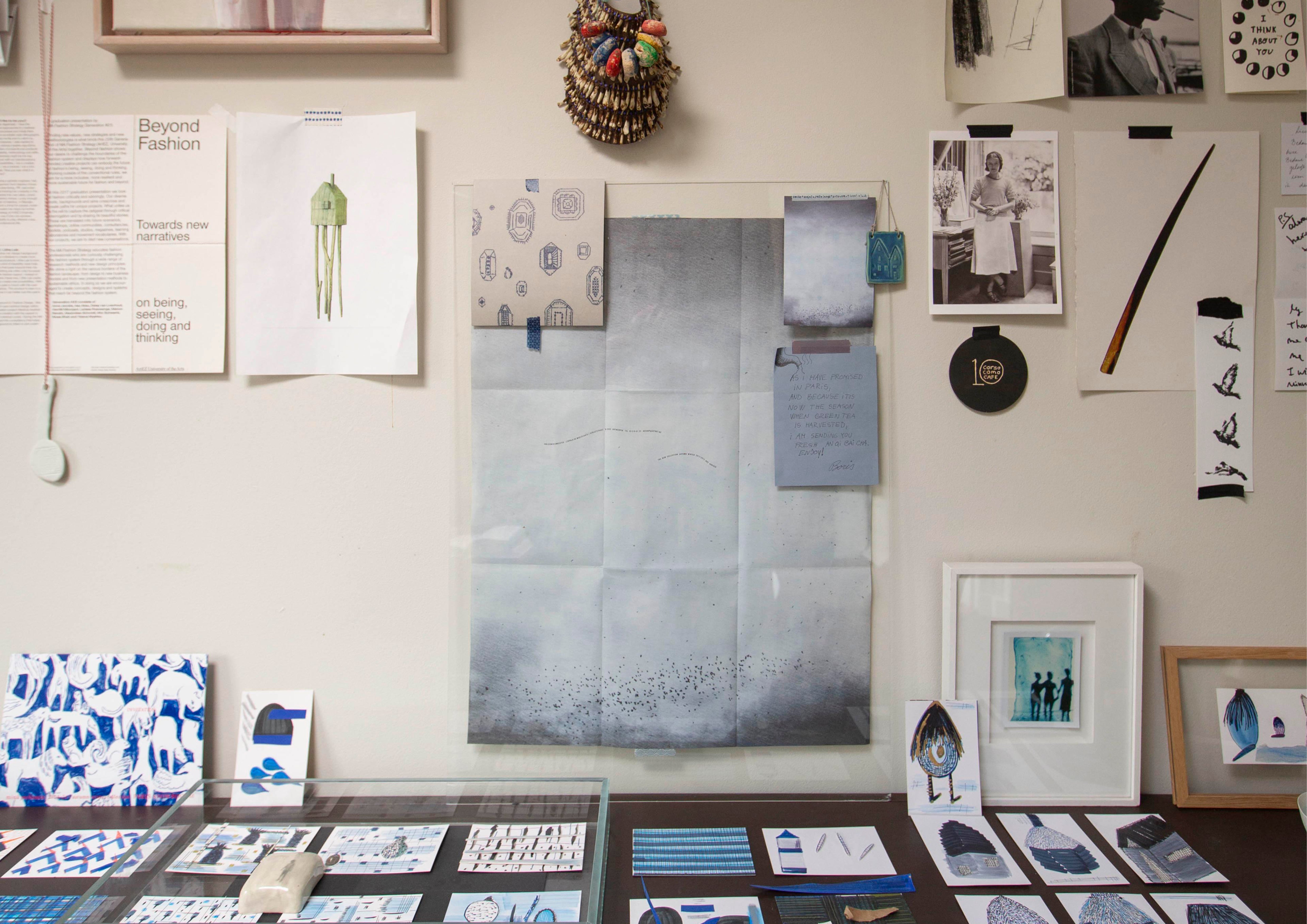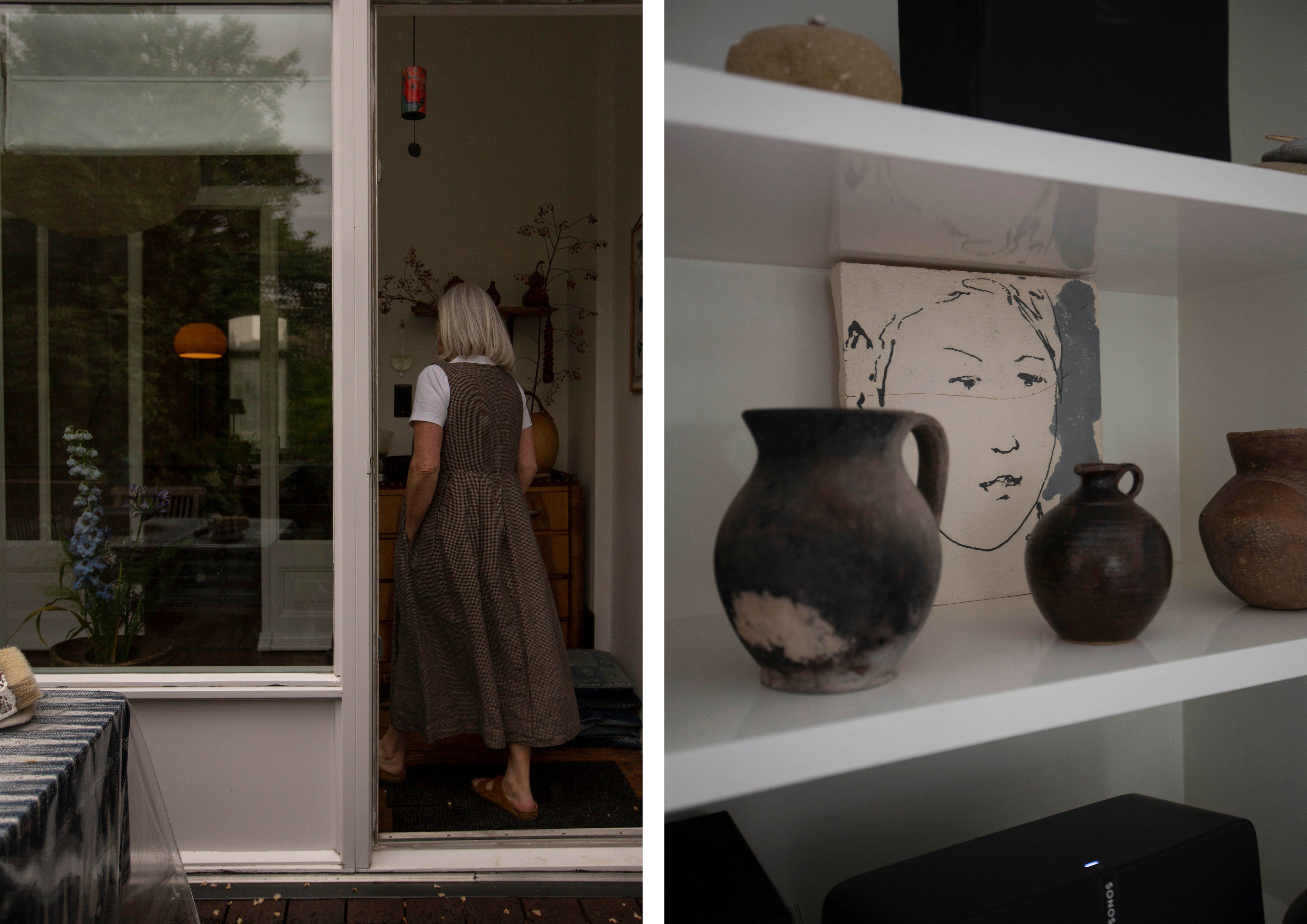
Tucked away on a quiet street in the Markt district of Arnhem, in the east of the Netherlands, is Jones. Started by Judith Ter Haar in 1988, the shop is a tranquil space housed in an old, industrial printing house.
The collection at Jones, including several TOAST pieces, is masterfully curated by Judith, embracing the very same essence of the TOAST design aesthetic; ease, functionality, and richness of texture.
We find a moment to talk to Judith about the inspiration behind starting Jones, and her favourite spots to visit in the city...
How did Jones first begin?
Jones first started in 1988, with just a small space of around 50-square-metres. The original shop was in Arnhem, the same city we are in today. I had been working in fashion for more than six years as a buyer and stylist, which allowed me to work and collaborate with some of the best fashion entrepreneurs and retailers in the country. There was always a longing to start my own business, and with a lot of support from friends who had their own brands I was able to start up something of my own.
What does Jones mean to you?
Jones is located in an old printing house, a municipal monument with most of the original elements still intact. The interior is in some ways rough, with a beaten-up concrete floor, yet there is a sophisticated feel to it, too. I suppose this is because of the building's high ceilings and glass panels, which allow natural light to enter and fill the space.
I have always longed for a space where you can feel the tranquillity and close connection to the outdoors. It feels very personal. I always wanted the store to be like a home; a space that could comfort people, surrounded by a delicate and peaceful aesthetic.


You grew up in both Africa and the Netherlands, what did you learn from that?
Africa gave me a love for colour and fabrics, and a deep understanding of the senses. I believe it laid the foundation for my drive to address the aesthetic and design as well. To me, it resembles the colours of the earth with all its nuances, changing by the weather. The smell of nature after heavy rains. The expression and joy for life expressed by indigenous people living there. The markets with their various foods, and the noises of traffic and tradeswomen. The rural surroundings of the landscape, and the places where I used to climb trees.
Africa was a huge contradiction to my current environment in the Netherlands, with its rigid structure of landscapes, the ordered rhythms of the day and school duties. To me, being sensitive and perceptive to my surroundings, both in design and nature, is essential to charge and regain a sense of peace.
What does a usual day look like for you? Do you follow any rituals or routines?
One ritual that has stood the test of time is preparing my breakfast. A Zen master once told me that we had to choose one act to implement in our morning routine for a certain period.
The training was used to create an everyday habit with dedication and slow attention. So, I chose to make the best possible breakfast every day. It is the little present I give myself to start each day with.
My days are never the same. Some days I am teaching at the Art academy or travelling across Europe to source and buy new collections, and others I am in the store with the clients or simply having a day off doing nothing. But whatever I am doing, I never skip my breakfast preparation; it has become the foundation to my day.


What sort of things do you look for when choosing items for your collection? Are there certain colours and fabrics you are drawn to?
I am usually drawn to the material first, so touching the garments is very important to me. You can always distinguish bad quality from good by the standards of quality material. A well-made, crisp cotton shirt is one you can hear. Good quality fabrics are what comfort our body, and what we wear affects us.
Of course, the cut of a design is also essential. To achieve pure simplicity in cut and design is a masterful job. I am constantly searching for the muted and minimal designs with the highest demands on quality.
When it comes to colours, I never stray away from indigo blues, greys and whites in all of their shades. People who say that white isn't a colour have never experienced the richness of the endless shades of white that exist.
It is not always easy to recognise quality at a first glance. In Japan they have a name for this; Takumi craftsmanship is a guarantee of the utmost quality. Those craftsmen and women have an excellent eye for detail and experienced a training of at least 25 years.
What are your favourite spots to visit in Arnhem?
One of my favourite places to relax on the outside terrace is a little cafe named Sugar Hill. If the chef Werrie van Leeuwen is in the house, he usually brings me something off-menu. Those are my best tasting memories.
A fine gallery in the city is Collectie de Groen, founded by two Arnhem-based artists who dedicate their time and means to support the Arts and makers.
Every Saturday I visit the organic farmers' market to buy my groceries for the week, and my favourite shop is a local art suppliers in my neighbourhood - this is where I buy my pencils and paper.


Are there any designers and artists that particularly inspire you?
My favourite designer of all time has got to be Yohji Yamamoto. I am so grateful to have been able to stock pieces of his collections at Jones, back in the day. A designer who is making a difference today and whom I admire is Sofie D'Hoore. As far as I am concerned, she is a master in designing pure garments with supreme qualities, with an eye for colour that only few designers have.
Akira Minagawa, designer of the brand Min Perhonen, is the master in beauty and quality in fabrics. The drawings on his textiles are all his own, and are exclusively made with the highest demands on quality.
Do you think about the life cycle of your clothing?
I believe your wardrobe should be a lifelong commitment. It belongs to you and becomes an extension of your personality. So, taking care of these clothes is very important to me. If I ever have pieces that I haven't worn for a few years, I collect and sell them in our annual 2ND LIFE sale at Jones.
With 2ND LIFE, we offer our clients the opportunity to collect the garments they cherish but have stopped wearing, so we can give them a new home. During these four days a year, a lot of young people have the opportunity to become the new owner, but for a friendly price they can afford. To see them walking in these pieces gives meaning to them. It makes fashion design a sustainable product with a long-term life cycle.


What is the best advice you have been given have you been given that you could pass on?
One of my first employers gave me a piece of advice I still cherish to this very day. She said, that everyone gets his or her chances in life, you only have to be awake to see them.
For me personally, this means that you have to follow your life path, keep your eyes open, and go for it when the time is right. Keep walking as if there is no final destination. Embrace the failures and never regret. If you can enjoy the journey, you will be present in the now. And that's embracing life.
Judith is photographed in her home, and wears the Linen Gingham Dress.
Images by Amber Zeekaf.
A curation of the TOAST A20 Collection can be found at Jones, situated in the Markt district of Arnhem.
Add a comment